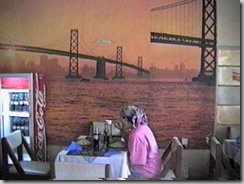Why do some sites make it so hard to do business with them? Is it because they want customers hardy enough to jump through the hoops? Perhaps if the customers prove their stamina and cleverness by making it through to order a product, they will be the ones less likely to need support?
I've gotten some good deals from TechForLess.com, so it is taking me longer than usual to give up on them. My first bad episode was when I ordered a laptop, got the confirmation, then the next day got a message that the order was canceled--seems they didn't like my being in Nigeria even though the order was paid from and shipped to the US, as well as sealed by one of those "prove your identity" credit-card pop-ups. However, their customer service was very helpful and made sure that the order got filled eventually.
Turns out that one of the laptops I bought from them as a Vista system actually had been downgraded to XP, and badly done so that the right drivers were missing. Oh well, mistakes happen.
Now, though, I can't even browse their web site! Since switching our hospital system from transparent to non-transparent proxy (so that we can force user logins), I just get an error message on their site, "Sorry, but the activity from your computer has tripped an alert on our server. This maybe because you are using some form of web browsing accelerator software. If this is the case, please disable this software while browsing our site." There is a bypass -- type "GO" and press the button, be patient for a 30 second delay -- but it doesn't work.
Now, is this business really so swamped by bots or web accelerators or whatever that it can't manage, and has to block legitimate customers? Are they so far above their competitors that they can afford to annoy their customers and actually ask them to disable their web browsing accelerators? Since those possibilities are hard to to accept, I can only conclude that TechForLess is trying to screen out customers who don't fit their mould, who might just say "oh well" and go on to NewEgg where at least they can start shopping. TechForLess is by no means unique ... at least for international shoppers, there are many other businesses that seem more interested in keeping us away than in getting our business.
For ease international shopping, I have to give the prize to Amazon. In fifteen years and with hundreds of purchases on Amazon, I have never had a problem. If I want to ship to a new address, no problem. If my ip address is in Nigeria, or Kenya, or South Africa, no problem. No surprise cancellations, no denied credit cards, just good service (ok, now and then a little problem, but 99% good).
